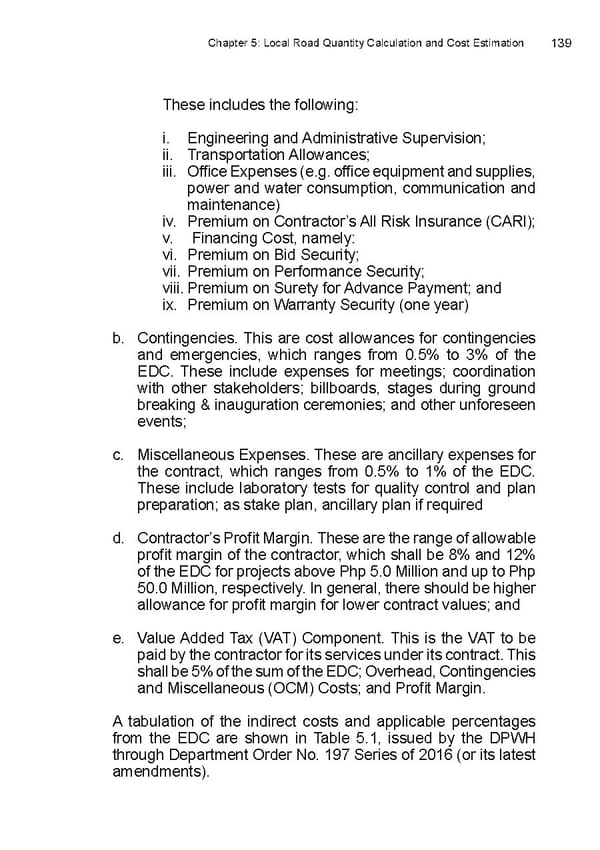Chapter 5: Local Road Quantity Calculation and Cost Estimation 139 These includes the following: i. Engineering and Administrative Supervision; ii. Transportation Allowances; iii. Office Expenses (e.g. office equipment and supplies, power and water consumption, communication and maintenance) iv. Premium on Contractor’s All Risk Insurance (CARl); v. Financing Cost, namely: vi. Premium on Bid Security; vii. Premium on Performance Security; viii. Premium on Surety for Advance Payment; and ix. Premium on Warranty Security (one year) b. Contingencies. This are cost allowances for contingencies and emergencies, which ranges from 0.5% to 3% of the EDC. These include expenses for meetings; coordination with other stakeholders; billboards, stages during ground breaking & inauguration ceremonies; and other unforeseen events; c. Miscellaneous Expenses. These are ancillary expenses for the contract, which ranges from 0.5% to 1% of the EDC. These include laboratory tests for quality control and plan preparation; as stake plan, ancillary plan if required d. Contractor’s Profit Margin. These are the range of allowable profit margin of the contractor, which shall be 8% and 12% of the EDC for projects above Php 5.0 Million and up to Php 50.0 Million, respectively. In general, there should be higher allowance for profit margin for lower contract values; and e. Value Added Tax (VAT) Component. This is the VAT to be paid by the contractor for its services under its contract. This shall be 5% of the sum of the EDC; Overhead, Contingencies and Miscellaneous (OCM) Costs; and Profit Margin. A tabulation of the indirect costs and applicable percentages from the EDC are shown in Table 5.1, issued by the DPWH through Department Order No. 197 Series of 2016 (or its latest amendments).
 Local Road Management Manual Page 139 Page 141
Local Road Management Manual Page 139 Page 141